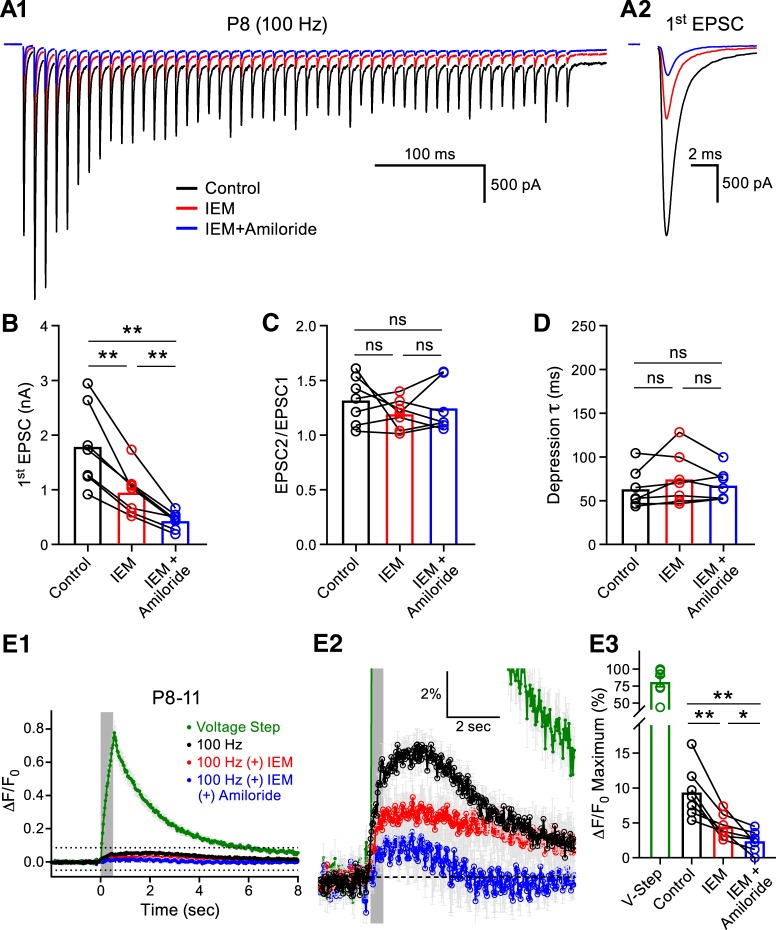Figure 5.
ASIC-mediated synaptic currents and Ca2+ transients in the juvenile MNTB Principal cell. A1, Representative EPSC traces (100 Hz for 500 ms, left) evoked by midline stimulation are displayed from a P8 animal in control conditions (black), after the addition of IEM-1460 (red, 60 μm), and after the addition of IEM-1460 (60 μm) + amiloride (blue, 750 μm). The first EPSC from the train is enlarged in A2 for comparison and the summary data for their amplitude is shown in B (one-way ANOVA with post hoc Tukey's test; n = 7; control vs IEM-1460: p = 0.0046, control vs IEM-1460 + amiloride: p = 0.0034, IEM-1460 vs IEM-1460 + amiloride: p = 0.0081). C, D, Neither IEM-1460 nor IEM-1460 + amiloride application altered the STP parameters of paired-pulse ratio (C: n = 7, one-way ANOVA with post hoc Tukey's test, control vs IEM-1460: p = 0.4352, control vs IEM-1460 + amiloride: p = 0.7354, IEM-1460 vs IEM-1460 + amiloride: p = 0.7217) or τ (D: control vs IEM-1460: p = 0.2928, control vs IEM-1460 + amiloride: 0.7719, IEM-1460 vs IEM-1460 + amiloride: p = 0.4437). E1, Ca2+ transients in the postsynaptic MNTB principal cells were measured using OGB1 evoked by afferent fiber stimulation at a frequency of 100 Hz for 500 ms (gray box denotes stimulation) in control conditions (black), after the addition of IEM-1460 (red), and after the addition of IEM-1460 + amiloride (blue). The green trace represents the Ca2+ transient from a voltage step. The region outlined by dotted lines in E1 is shown at higher magnification in E2. Application of IEM-1460 + amiloride further reduced the MNTB principal cell Ca2+ transient compared with IEM-1460 alone. E3, Summary data of the peak Ca2+ responses in the P8–P11 group (one-way ANOVA with post hoc Tukey's test, n = 7; control vs IEM-1460: p = 0.0068, control vs IEM-1460 + amiloride: p = 0.0068, IEM-1460 vs IEM-1460 + amiloride: p = 0.0445). ns, nonsignificant, *p < 0.05, **p < 0.005.

